Exploring the Acceptance of the Technical Disclosure Method Based on 3D Digital Technological Process by Construction Workers through the Perspective of TAM
Abstract
:1. Introduction
2. Research Model and Hypotheses
2.1. Technology Acceptance Model
2.2. Cognitive Level
2.3. Subjective Norms
2.4. Technology Anxiety
2.5. Enjoyment
3. Research Method
3.1. Survey Design and Data Collection
3.2. Digital Technological Process of the Infilled Masonry Wall
4. Results
4.1. Measurement Model
4.2. Structural Model
4.3. Analysis
5. Conclusions
Author Contributions
Funding
Data Availability Statement
Acknowledgments
Conflicts of Interest
References
- Riaz, H.; Iqbal Ahmad Khan, K.; Ullah, F.; Bilal Tahir, M.; Alqurashi, M.; Badr Alsulami, T. Key factors for implementation of total quality management in construction Sector: A system dynamics approach. Ain Shams Eng. J. 2023, 14, 101903. [Google Scholar] [CrossRef]
- Huang, X. Research on Digitization of Construction Process Based on MBD. Master’s Thesis, Nanchang University, Nanchang, China, 2021. [Google Scholar]
- Haupt, T.C.; Whiteman, D.E. Inhibiting factors of implementing total quality management on construction sites. TQM Mag. 2004, 16, 166–173. [Google Scholar] [CrossRef]
- Chini, A.R.; Valdez, H.E. ISO 9000 and the U.S. Construction Industry. J. Manag. Eng. 2003, 19, 69–77. [Google Scholar] [CrossRef]
- Ullah, F.; Thaheem, M.J.; Siddiqui, S.Q.; Khurshid, M.B. Influence of Six Sigma on project success in construction industry of Pakistan. TQM J. 2017, 29, 276–309. [Google Scholar] [CrossRef]
- Luo, H.B.; Ling, L.; Chen, K.; Fordjour, A.-A.M.; Chen, L.J. Digital technology for quality management in construction: A review and future research directions. Dev. Built Environ. 2022, 12, 100087. [Google Scholar] [CrossRef]
- Han, C.J.; Tang, F.L.; Ma, T.Y.; Gu, L.H.; Tong, Z. Construction quality evaluation of asphalt pavement based on BIM and GIS. Autom. Constr. 2022, 141, 104398. [Google Scholar] [CrossRef]
- Sheng, D.; Ding, L.Y.; Zhong, B.T.; Love, P.E.D.; Luo, H.B.; Chen, J.G. Construction quality information management with blockchains. Autom. Constr. 2020, 120, 103373. [Google Scholar] [CrossRef]
- Hong, S.K.; Yoon, J.; Ham, Y.; Lee, B.; Kim, H. Monitoring safety behaviors of scaffolding workers using Gramian angular field convolution neural network based on IMU sensing data. Autom. Constr. 2023, 148, 104748. [Google Scholar] [CrossRef]
- Ma, Z.L.; Cai, S.Y.; Mao, N.; Yang, Q.L.; Feng, J.G.; Wang, P.Y. Construction quality management based on a collaborative system using BIM and indoor positioning. Autom. Constr. 2018, 92, 35–45. [Google Scholar] [CrossRef]
- Rokooei, S.; Shojaei, A.; Alvanchi, A.; Azad, R.K.; Didehvar, N. Virtual reality application for construction safety training. Saf. Sci. 2023, 157, 105925. [Google Scholar] [CrossRef]
- Adami, P.; Rodrigues, P.B.; Woods, P.J.; Becerik-Gerber, B.; Soibelman, L.; Copur-Gencturk, Y.; Lucas, G.M. Effectiveness of VR-based training on improving construction workers’ knowledge, skills, and safety behavior in robotic teleoperation. Adv. Eng. Inform. 2021, 50, 101431. [Google Scholar] [CrossRef]
- Fang, W.L.; Ma, L.; Love, P.E.D.; Luo, H.B.; Ding, L.Y.; Zhou, A. Knowledge graph for identifying hazards on construction sites: Integrating computer vision with ontology. Autom. Constr. 2020, 119, 103310. [Google Scholar] [CrossRef]
- Hilal, M.; Maqsood, T.; Abdekhodaee, A. A scientometric analysis of BIM studies in facilities management. Int. J. Build. Pathol. Adapt. 2019, 37, 122. [Google Scholar] [CrossRef]
- Liu, Y.; Jia, L.; Wu, H.; Huang, X. Research on 3D Digital Technological Process of Construction Products with Model-Based Definition. Appl. Sci. 2022, 12, 8585. [Google Scholar] [CrossRef]
- Zhu, H.H.; Li, J. Research on three-dimensional digital process planning based on MBD. Kybernetes 2018, 47, 816–830. [Google Scholar] [CrossRef]
- Wang, L.X.; Guo, Y.; Guo, M.Y. Exploration of Non-Revolved Parts Modeling based on MBD and Pro/Engineer. Adv. Mater. Res. 2013, 712, 1171–1174. [Google Scholar] [CrossRef]
- Zhang, Y.F.; Shi, L.C.; Ren, S.; Zhang, D. A model-driven dynamic synchronization mechanism of lifecycle business activity for complicated and customized products. Procedia CIRP 2019, 83, 748. [Google Scholar] [CrossRef]
- Geng, J.H.; Zhang, S.M.; Yang, B. A Publishing Method of Lightweight Three-Dimensional Assembly Instruction for Complex Products. J. Comput. Inf. Sci. Eng. 2015, 15, 031004. [Google Scholar] [CrossRef]
- Liu, D.; Lu, W.; Niu, Y. Extended Technology-Acceptance Model to Make Smart Construction Systems Successful. J. Constr. Eng. Manag. 2018, 144. [Google Scholar] [CrossRef]
- Lee, S.; Yu, J.; Jeong, D. BIM Acceptance Model in Construction Organizations. J. Manag. Eng. 2015, 31, 04014048. [Google Scholar] [CrossRef]
- Cai, L.; Yuen, K.F.; Wang, X. Explore public acceptance of autonomous buses: An integrated model of UTAUT, TTF and trust. Travel Behav. Soc. 2023, 31, 120–130. [Google Scholar] [CrossRef]
- Andrews, J.E.; Ward, H.; Yoon, J. UTAUT as a Model for Understanding Intention to Adopt AI and Related Technologies among Librarians. J. Acad. Librariansh. 2021, 47, 102437. [Google Scholar] [CrossRef]
- Shahid, M. Exploring the determinants of adoption of Unified Payment Interface (UPI) in India: A study based on diffusion of innovation theory. Digit. Bus. 2022, 2, 100040. [Google Scholar]
- Somya, G.; Wafa, G.; Dharen, K.P.; Sah, G.P. Artificial intelligence adoption in the insurance industry: Evidence using the technology-organization-environment framework. Res. Int. Bus. Financ. 2022, 63, 101757. [Google Scholar]
- Al Hadwer, A.; Tavana, M.; Gillis, D.; Rezania, D. A Systematic Review of Organizational Factors Impacting Cloud-based Technology Adoption Using Technology-Organization-Environment Framework. Internet Things 2021, 15, 100407. [Google Scholar] [CrossRef]
- Wang, H.Y.; Luo, X.T.; Yu, X.D. Exploring the role of IoT in project management based on Task-technology Fit model. Procedia Comput. Sci. 2021, 199, 1052–1059. [Google Scholar] [CrossRef]
- Sorce, J.; Issa, R.R.A. Extended technology acceptance model (tam) for adoption of information and communications technology (ICT) in the US construction industry. J. Inf. Technol. Constr. 2021, 2, 227–248. [Google Scholar] [CrossRef]
- Son, H.; Lee, S.; Kim, C. What drives the adoption of building information modeling in design organizations? An empirical investigation of the antecedents affecting architects’ behavioral intentions. Autom. Constr. 2015, 49, 92–99. [Google Scholar] [CrossRef]
- Davis, F.D. Perceived Usefulness, Perceived Ease of Use, and User Acceptance of Information Technology. MIS Q. 1989, 13, 319–340. [Google Scholar] [CrossRef]
- Park, Y.; Son, H.; Kim, C. Investigating the determinants of construction professionals’ acceptance of web-based training: An extension of the technology acceptance model. Autom. Constr. 2012, 22, 377–386. [Google Scholar] [CrossRef]
- Billanes, J.; Enevoldsen, P. Influential factors to residential building Occupants? acceptance and adoption of smart energy technologies in Denmark. Energy Build. 2022, 276, 112524. [Google Scholar] [CrossRef]
- Son, H.; Park, Y.; Kim, C.; Chou, J.-S. Toward an understanding of construction professionals’ acceptance of mobile computing devices in South Korea: An extension of the technology acceptance model. Autom. Constr. 2012, 28, 82–90. [Google Scholar] [CrossRef]
- Abdullah, F.; Ward, R.R.; Ahmed, E. Investigating the influence of the most commonly used external variables of TAM on students’ Perceived Ease of Use (PEOU) and Perceived Usefulness (PU) of e-portfolios. Comput. Hum. Behav 2016, 63, 75–90. [Google Scholar] [CrossRef]
- Ahmad, A.; Rasul, T.; Yousaf, A.; Zaman, U. Understanding Factors Influencing Elderly Diabetic Patients’ Continuance Intention to Use Digital Health Wearables: Extending the Technology Acceptance Model (TAM). J. Open Innov. Technol. Mark. Complex. 2020, 6, 81. [Google Scholar] [CrossRef]
- Zhang, M.; Shu, L.; Luo, X.W.; Yuan, M.Q.; Zheng, X.Z. Virtual reality technology in construction safety training: Extended technology acceptance model. Autom. Constr. 2022, 135, 104113. [Google Scholar] [CrossRef]
- Wong, T.K.; Man, S.S.; Chan, A.H.S. Exploring the acceptance of PPE by construction workers: An extension of the technology acceptance model with safety management practices and safety consciousness. Saf. Sci. 2021, 139, 105239. [Google Scholar] [CrossRef]
- Man, S.S.; Alabdulkarim, S.A.; Chan, A.H.S.; Zhang, T. The acceptance of personal protective equipment among Hong Kong construction workers: An integration of technology acceptance model and theory of planned behavior with risk perception and safety climate. J. Saf. Res. 2021, 79, 329–340. [Google Scholar] [CrossRef]
- Xu, N.; Wang, L. Study on Technical Disclosure in Construction Based on BIM. Appl. Mech. Mater. 2013, 438, 1698–1701. [Google Scholar] [CrossRef]
- Wu, J.; Guo, Y.; Gao, C.; Sun, J. An automatic text generation algorithm of technical disclosure for catenary construction based on knowledge element model. Adv. Eng. Inform. 2023, 56, 101913. [Google Scholar] [CrossRef]
- Venkatesh, V.; Davis, F.D. A theoretical extension of the technology acceptance model: Four longitudinal field studies. Manag. Sci. 2000, 46, 186–204. [Google Scholar] [CrossRef]
- Davis, F.D.; Bagozzi, R.P.; Warshaw, P.R. User acceptance of computer technology: A comparison of two theoretical models. Manag. Sci. 1989, 35, 982–1003. [Google Scholar] [CrossRef]
- Abdullah, F.; Ward, R. Developing a General Extended Technology Acceptance Model for E-Learning (GETAMEL) by analysing commonly used external factors. Comput. Hum. Behav. 2016, 56, 238–256. [Google Scholar] [CrossRef]
- Mun, Y.Y.; Hwang, Y. Predicting the use of web-based information systems: Self-efficacy, enjoyment, learning goal orientation, and the technology acceptance model. Int. J. Hum.-Comput. Stud. 2003, 59, 431–449. [Google Scholar]
- Ranasinghe, U.; Tang, L.M.; Harris, C.; Li, W.; Montayre, J.; de Almeida Neto, A.; Mark, A. A systematic review on workplace health and safety of ageing construction workers. Saf. Sci. 2023, 167, 106276. [Google Scholar] [CrossRef]
- Doanh, N.K.; Do Dinh, L.; Quynh, N.N. Tea farmers’ intention to participate in Livestream sales in Vietnam: The combination of the Technology Acceptance Model (TAM) and barrier factors. J. Rural. Stud. 2022, 94, 408–417. [Google Scholar] [CrossRef]
- Davis, F.D. A Technology Acceptance Model for Empirically Testing New End-User Information Systems: Theory and Results. Ph.D. Dissertation, Massachusetts Institute of Technology, Cambridge, MA, USA, 1986. [Google Scholar]
- Özdemir-Güngör, D.; Camgöz-Akdag, H. Examining the effects of technology anxiety and resistance to change on the acceptance of breast tumor registry system: Evidence from Turkey. Technol. Soc. 2018, 54, 66–73. [Google Scholar] [CrossRef]
- Paltasingh, K.R.; Goyari, P. Impact of farmer education on farm productivity under varying technologies: Case of paddy growers in India. Agric. Food Econ. 2018, 6, 7. [Google Scholar] [CrossRef]
- Chen, F.; Jiao, H.; Han, L.; Shen, L.; Du, W.; Ye, Q.; Yu, G. Real-time monitoring of construction quality for gravel piles based on Internet of Things. Autom. Constr. 2020, 116, 103228. [Google Scholar] [CrossRef]
- Lee, Y.H.; Hsieh, Y.C.; Ma, C.Y. A model of organizational employees’ e-learning systems acceptance. Knowl.-Based Syst. 2011, 24, 355–366. [Google Scholar] [CrossRef]
- Rahimpour, M.R.; Lovell, N.H.; Celler, B.G.; McCormick, J. Patients’ perceptions of a home telecare system. Int. J. Med. Inform. 2008, 77, 486–498. [Google Scholar] [CrossRef] [PubMed]
- Brosnan, M.J. Modeling technophobia: A case for word processing. Comput. Hum. Behav. 1999, 15, 105–121. [Google Scholar] [CrossRef]
- Holdack, E.; Lurie-Stoyanov, K.; Fromme, H.F. The role of perceived enjoyment and perceived informativeness in assessing the acceptance of AR wearables. J. Retail. Consum. Serv. 2022, 65, 102259. [Google Scholar] [CrossRef]
- Sun, H.; Zhang, P. The role of moderating factors in user technology acceptance. Int. J. Hum. Comput. Stud. 2006, 64, 53–78. [Google Scholar] [CrossRef]
- Türker, C.; Altay, B.C.; Okumuş, A. Understanding user acceptance of QR code mobile payment systems in Turkey: An extended TAM. Technol. Forecast. Soc. Chang. 2022, 184, 121968. [Google Scholar] [CrossRef]
- Chen, T.; Chen, J.; Or, C.K.; Lo, F.P. Path analysis of the roles of age, self-efficacy, and TAM constructs in the acceptance of performing upper limb exercises through immersive virtual reality games. Int. J. Ind. Ergon. 2022, 91, 103360. [Google Scholar] [CrossRef]
- Hair, J.F.; Black, W.C.; Babin, B.J.; Anderson, R.E. Multivariate Data Analysis, 7th ed.; Pearson: London, UK, 2009. [Google Scholar]
- Fornell, C.; Larcker, D.F. Evaluating Structural Equation Models with Unobservable Variables and Measurement Error. J. Mark. Res. 1981, 18, 39–50. [Google Scholar] [CrossRef]
- Estriegana, R.; Medina-Merodio, J.-A.; Barchino, R. Student acceptance of virtual laboratory and practical work: An extension of the technology acceptance model. Comput. Educ. 2019, 135, 1–14. [Google Scholar] [CrossRef]
- Bandura, A. Self-efficacy mechanism in human agency. Am. Psychol. 1982, 37, 122. [Google Scholar] [CrossRef]
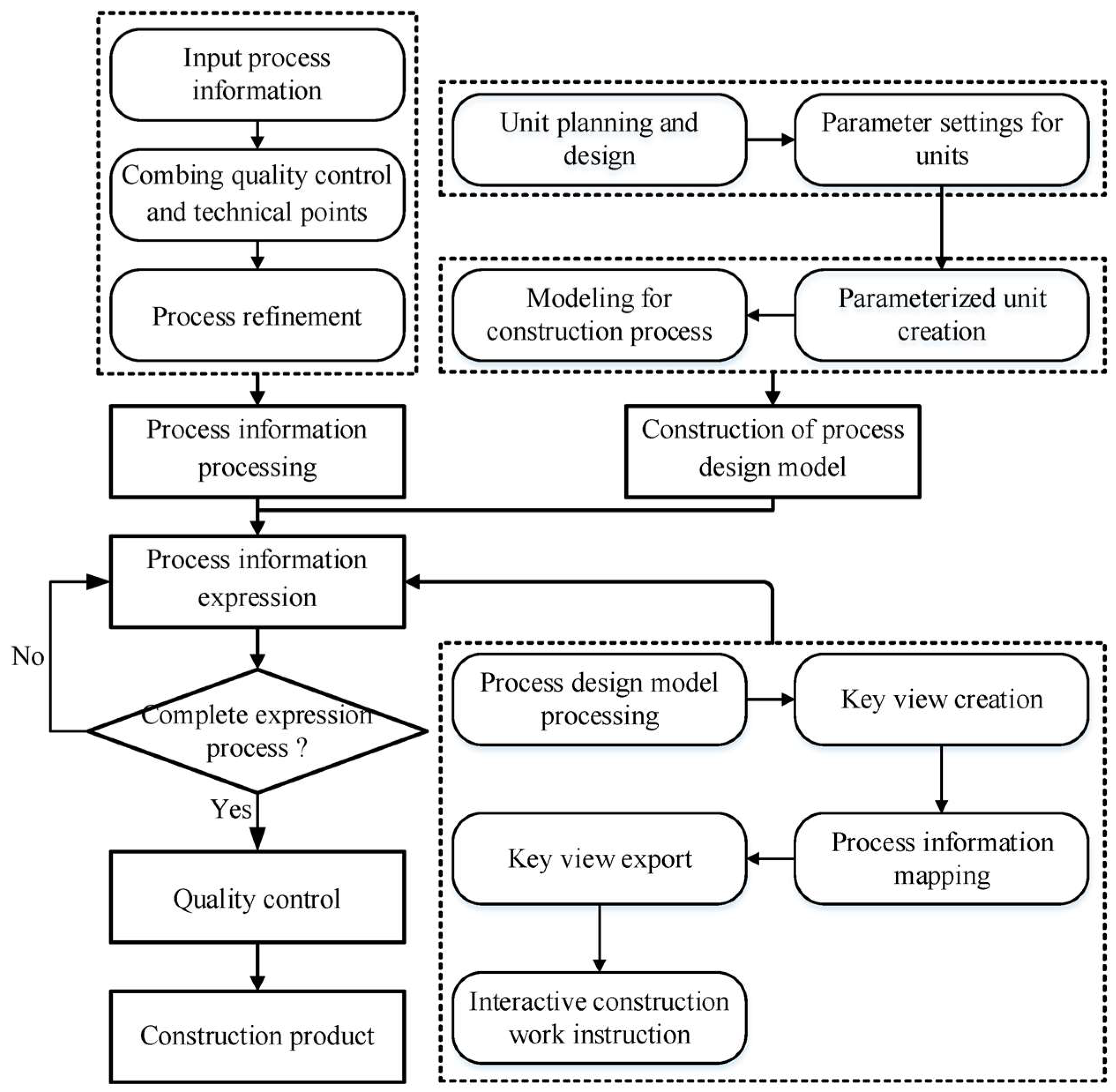
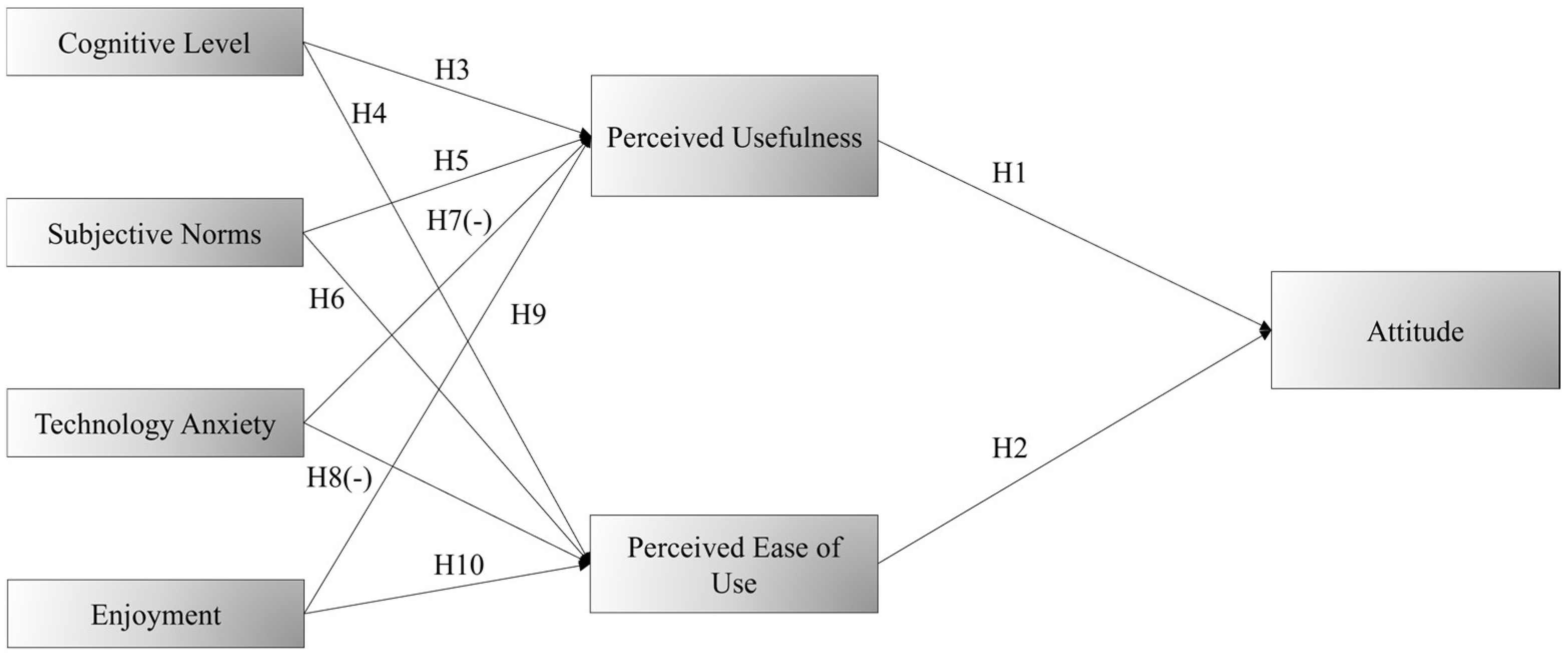
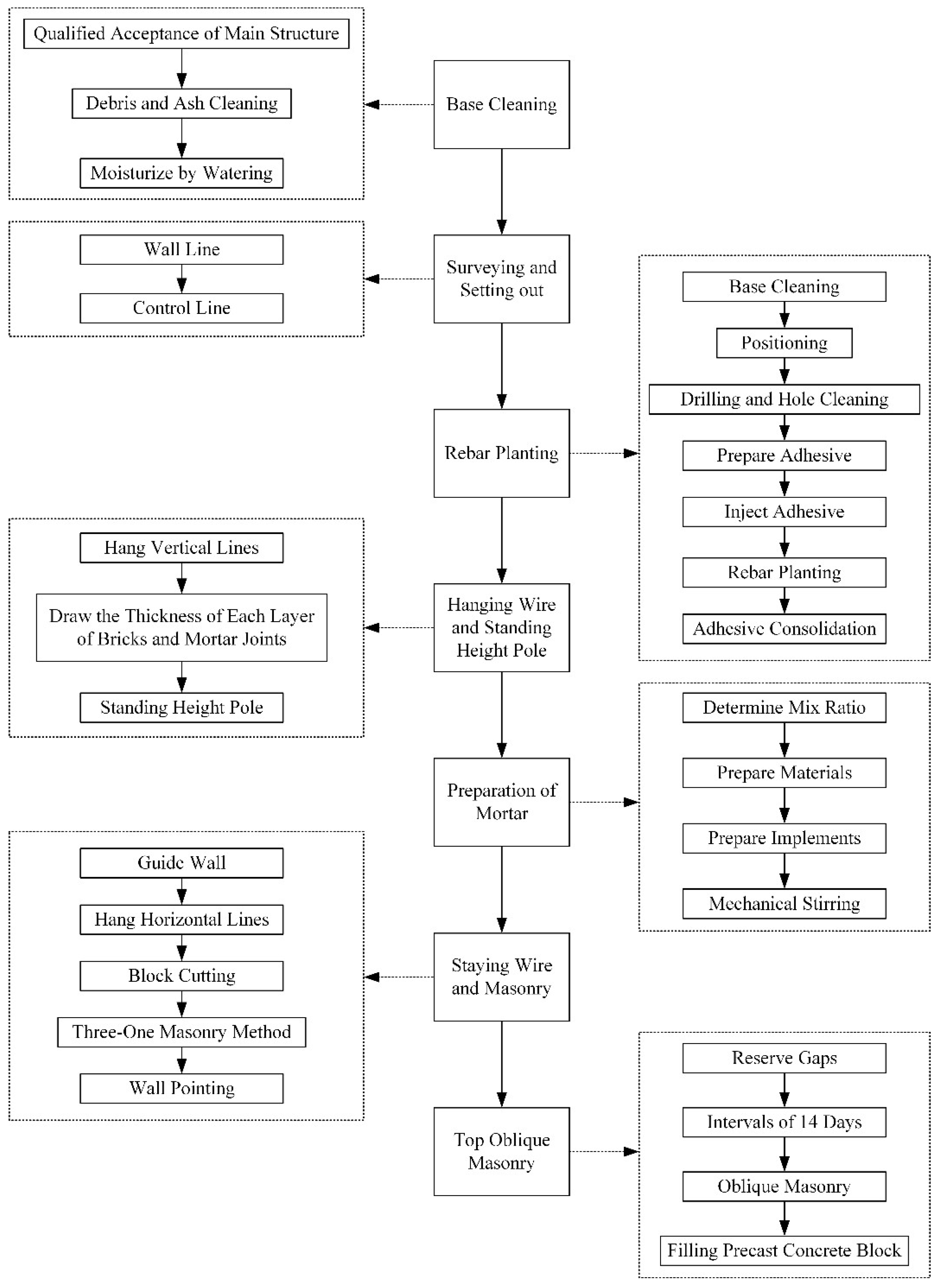
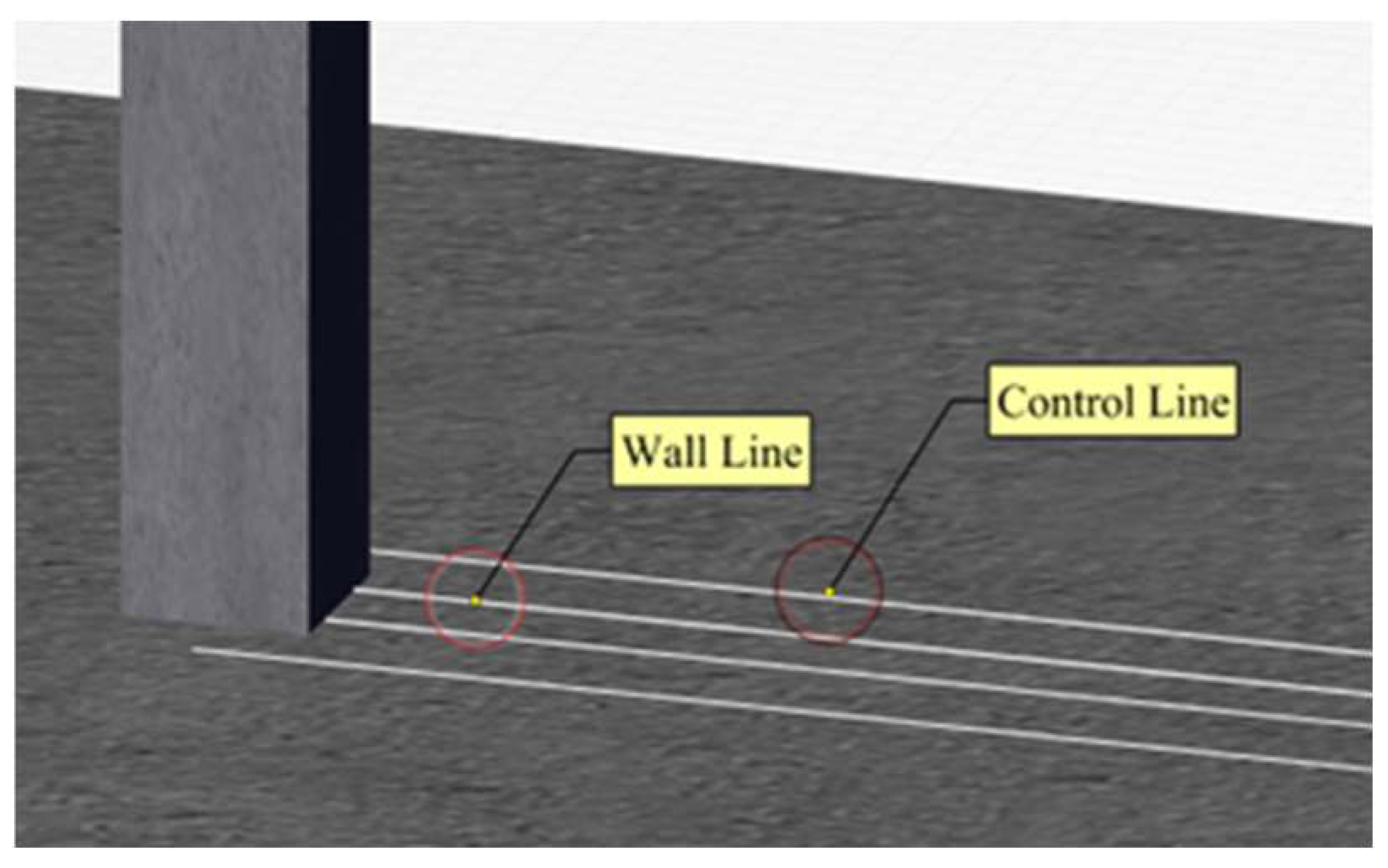
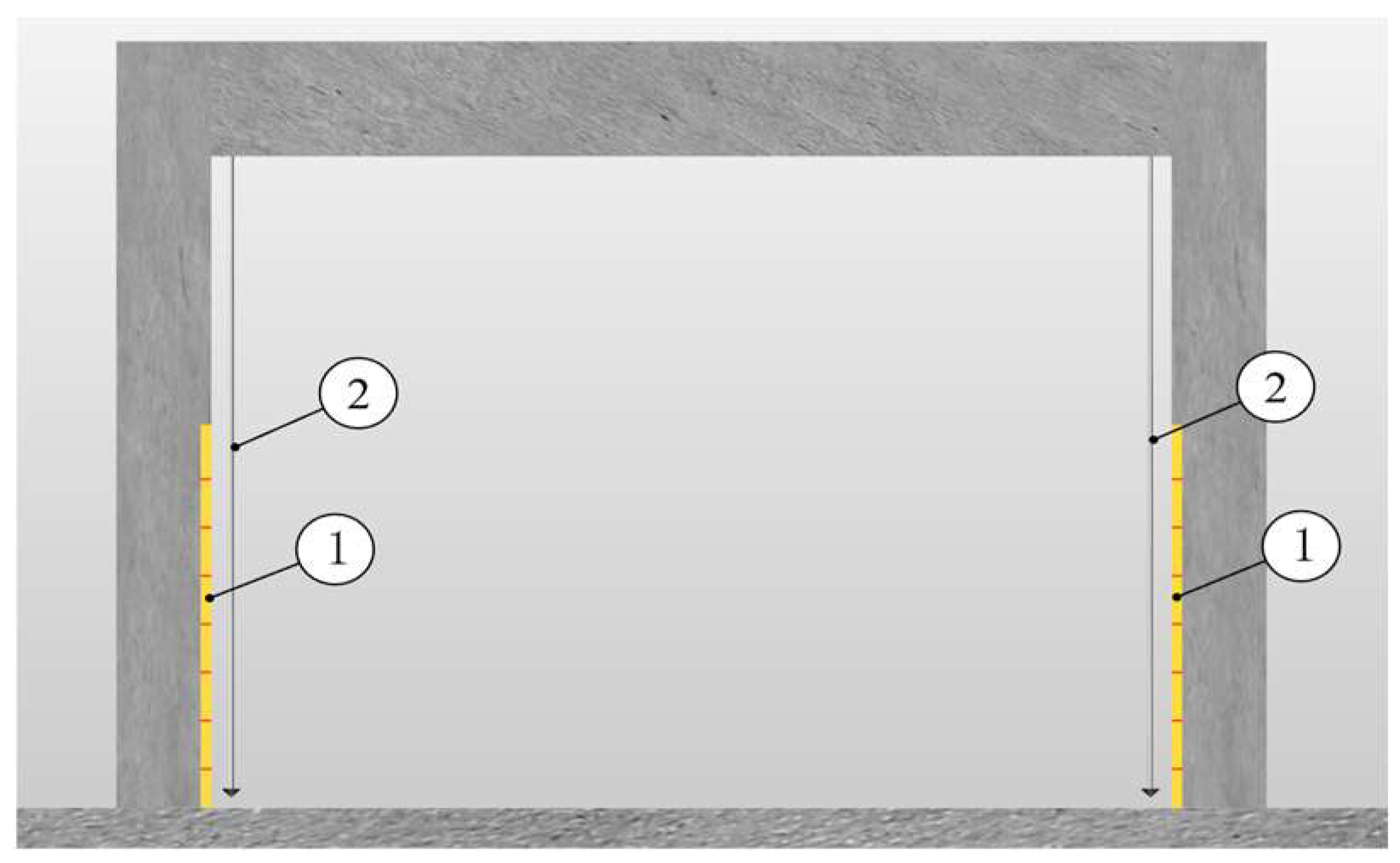


| Construct | Item | Loading | CR | AVE | References |
|---|---|---|---|---|---|
| Cognitive Level (Cronbach’s α = 0.906) | 0.907 | 0.764 | [34,46] | ||
| CL1 | I don’t know much about 3D digital technological process | 0.911 | |||
| CL2 | I don’t know the benefits of participating in technical disclosure based on 3D digital technological process | 0.861 | |||
| CL3 | I am willing to accept or attempt technical disclosure based on 3D digital technological process | 0.849 | |||
| Subjective Norms (Cronbach’s α = 0.910) | 0.910 | 0.772 | [31,34,56] | ||
| SN1 | My colleagues think that I should try this technical disclosure method | 0.904 | |||
| SN2 | My superiors think that I should try this technical disclosure method | 0.846 | |||
| SN3 | People who are important to me think that I should try this technical disclosure method | 0.885 | |||
| Technology Anxiety (Cronbach’s α = 0.899) | 0.903 | 0.758 | [31] | ||
| TA1 | This technical disclosure method makes me feel anxious | 0.846 | |||
| TA2 | This technical disclosure method makes me feel confused | 0.831 | |||
| TA3 | This technical disclosure method makes me feel confused | 0.931 | |||
| Enjoyment (Cronbach’s α = 0.940) | 0.940 | 0.840 | [31,34] | ||
| ENJ1 | I think this technical disclosure method is novel | 0.923 | |||
| ENJ2 | I think this technical disclosure method is interesting | 0.886 | |||
| ENJ3 | I think this technical disclosure method makes me willing to participate | 0.939 | |||
| PU (Cronbach’s α = 0.956) | 0.958 | 0.883 | [30,31,57] | ||
| PU1 | This technical disclosure method allows me to have a more direct understanding of the technological process | 0.938 | |||
| PU2 | Compared to other methods, this technical disclosure method is more efficient | 0.908 | |||
| PU3 | Compared to other methods, this technical disclosure method is more targeted and clearer | 0.972 | |||
| PEU (Cronbach’s α = 0.895) | 0.894 | 0.738 | [46,57] | ||
| PEU1 | This technical disclosure method is convenient | 0.867 | |||
| PEU2 | This technical disclosure method is easy to understand | 0.876 | |||
| PEU3 | The computer operation required to learn this technical disclosure method is not difficult | 0.834 | |||
| Attitude (Cronbach’s α = 0.931) | 0.931 | 0.819 | [31,36] | ||
| ATT1 | I think this technical disclosure method is a wise choice | 0.903 | |||
| ATT2 | I am satisfied with the results of this technical disclosure method | 0.886 | |||
| ATT3 | Compared to other methods, I prefer this technical disclosure method | 0.925 | |||
| Frequency | Percentage (%) | |
|---|---|---|
| Gender | ||
| Male | 265 | 84.4 |
| Female | 49 | 15.6 |
| Age | ||
| ≤25 | 13 | 4.1 |
| 25–30 | 36 | 11.5 |
| 30–40 | 86 | 27.4 |
| 40–50 | 126 | 40.1 |
| 50–60 | 49 | 15.6 |
| 60–65 | 4 | 1.3 |
| Education | ||
| Primary school or below | 66 | 21.0 |
| Junior high school | 143 | 45.5 |
| High school | 54 | 17.2 |
| Junior college or above | 51 | 16.2 |
| Length of Service | ||
| <5 years | 57 | 18.2 |
| 5–10 years | 96 | 30.6 |
| 10–20 years | 88 | 28.0 |
| 20–30 years | 60 | 19.1 |
| >30 years | 13 | 4.1 |
| Mean Value | Median | Standard Deviation | |
|---|---|---|---|
| CL1 | 3.328 | 3 | 1.108 |
| CL2 | 3.299 | 3 | 1.126 |
| CL3 | 3.290 | 3 | 1.157 |
| TA1 | 2.882 | 3 | 1.124 |
| TA2 | 2.904 | 3 | 1.139 |
| TA3 | 2.908 | 3 | 1.138 |
| SN1 | 3.035 | 3 | 1.054 |
| SN2 | 3.070 | 3 | 1.074 |
| SN3 | 3.089 | 3 | 1.021 |
| ENJ1 | 3.357 | 3 | 0.997 |
| ENJ2 | 3.411 | 3 | 1.031 |
| ENJ3 | 3.341 | 3 | 1.041 |
| PU1 | 3.420 | 3 | 1.032 |
| PU2 | 3.427 | 3 | 1.020 |
| PU3 | 3.424 | 3 | 1.020 |
| PEU1 | 3.083 | 3 | 1.156 |
| PEU2 | 3.156 | 3 | 1.172 |
| PEU3 | 3.121 | 3 | 1.142 |
| ATT1 | 3.239 | 3 | 1.014 |
| ATT2 | 3.248 | 3 | 1.032 |
| ATT3 | 3.242 | 3 | 1.028 |
| AVE | CL | SN | TA | ENJ | PU | PEU | ATT | |
|---|---|---|---|---|---|---|---|---|
| CL | 0.764 | 0.874 | ||||||
| SN | 0.772 | 0.383 | 0.879 | |||||
| TA | 0.758 | −0.487 | −0.340 | 0.871 | ||||
| ENJ | 0.840 | 0.614 | 0.473 | −0.549 | 0.917 | |||
| PU | 0.883 | 0.531 | 0.426 | −0.478 | 0.601 | 0.940 | ||
| PEU | 0.738 | 0.570 | 0.486 | −0.578 | 0.600 | 0.468 | 0.859 | |
| ATT | 0.819 | 0.475 | 0.391 | −0.451 | 0.521 | 0.670 | 0.603 | 0.905 |
| Fit Index | Recommended Value | Structural Model |
|---|---|---|
| χ2/df | <3 | 1.498 |
| GFI | >0.8 | 0.929 |
| AGFI | >0.8 | 0.905 |
| CFI | >0.9 | 0.986 |
| NFI | >0.9 | 0.958 |
| RMSEA | <0.08 | 0.040 |
| Hypothesis | Relationship | Standardized Path Coefficient | C.R. (t-Value) | Result |
|---|---|---|---|---|
| H1 | PU→ATT | 0.497 | 9.729 | supported (p < 0.001) |
| H2 | PEU→ATT | 0.370 | 7.002 | supported (p < 0.001) |
| H3 | CL→PU | 0.202 | 3.169 | supported (p < 0.01) |
| H4 | CL→PEU | 0.225 | 3.497 | supported (p < 0.001) |
| H5 | SN→PU | 0.142 | 2.618 | supported (p < 0.01) |
| H6 | SN→PEU | 0.204 | 3.707 | supported (p < 0.001) |
| H7 | TA→PU | −0.151 | −2.578 | supported (p < 0.05) |
| H8 | TA→PEU | −0.284 | −4.724 | supported (p < 0.001) |
| H9 | ENJ→PU | 0.327 | 4.786 | supported (p < 0.001) |
| H10 | ENJ→PEU | 0.210 | 3.071 | supported (p < 0.01) |
Disclaimer/Publisher’s Note: The statements, opinions and data contained in all publications are solely those of the individual author(s) and contributor(s) and not of MDPI and/or the editor(s). MDPI and/or the editor(s) disclaim responsibility for any injury to people or property resulting from any ideas, methods, instructions or products referred to in the content. |
© 2023 by the authors. Licensee MDPI, Basel, Switzerland. This article is an open access article distributed under the terms and conditions of the Creative Commons Attribution (CC BY) license (https://creativecommons.org/licenses/by/4.0/).
Share and Cite
Mei, Y.; Liu, J.; Jia, L.; Wu, H.; Lv, J. Exploring the Acceptance of the Technical Disclosure Method Based on 3D Digital Technological Process by Construction Workers through the Perspective of TAM. Buildings 2023, 13, 2419. https://doi.org/10.3390/buildings13102419
Mei Y, Liu J, Jia L, Wu H, Lv J. Exploring the Acceptance of the Technical Disclosure Method Based on 3D Digital Technological Process by Construction Workers through the Perspective of TAM. Buildings. 2023; 13(10):2419. https://doi.org/10.3390/buildings13102419
Chicago/Turabian StyleMei, Yujie, Jianqiang Liu, Lu Jia, Han Wu, and Jing Lv. 2023. "Exploring the Acceptance of the Technical Disclosure Method Based on 3D Digital Technological Process by Construction Workers through the Perspective of TAM" Buildings 13, no. 10: 2419. https://doi.org/10.3390/buildings13102419
APA StyleMei, Y., Liu, J., Jia, L., Wu, H., & Lv, J. (2023). Exploring the Acceptance of the Technical Disclosure Method Based on 3D Digital Technological Process by Construction Workers through the Perspective of TAM. Buildings, 13(10), 2419. https://doi.org/10.3390/buildings13102419






